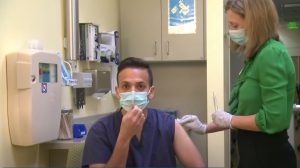NEW YORK (Reuters Health) – The two commercially available Mycobacterium tuberculosis-specific interferon-gamma release assays show excellent agreement with each other. As far more accurate indicators of latent TB infection than the tuberculin skin test, German physicians suggest the two tests may be considered the “gold standard” for this purpose.
The primary target for the interferon release assays is latent rather than active infection, the researchers note in the April issue of Chest. Unlike the tuberculin test, interferon release assays are unaffected by previous BCG vaccination and most nontuberculous mycobacteria.
To compare the two interferon release assays — QuantiFERON-TB Gold In Tube assay (QFT) and the T-Spot.TB (T-spot) — with the tuberculin skin test, Dr. Roland Diel at the University of Dusseldorf and associates conducted a prospective study of 812 close contacts of 123 culture-confirmed pulmonary TB source cases reported to the Hamburg Public Health Department between 2006 and 2008.
Agreement between the two interferon release assays was 93.9%, with the majority of contacts with discordant results having responses close the manufacturers’ cutoffs of both tests. Positive results from both assays were strongly associated with measures of exposure and infection risk.
“If a positive result for both IGRAs were to be assumed as representative of true infection,” Dr. Diel’s team states, “the sensitivity of the TST would be only moderate at a 10-mm cutoff (71.5%) and very low at a 15-mm cutoff (31.3%).”
Use of either the QFT or the T-spot test as a replacement for the tuberculin skin test would decrease the number of latent TB infection suspects to be investigated by approximately 70%, the investigators note. “Both QFT and T-Spot appear to be valuable public health tools,” they conclude.
Reference:
Chest 2009;135:1010-1018.




